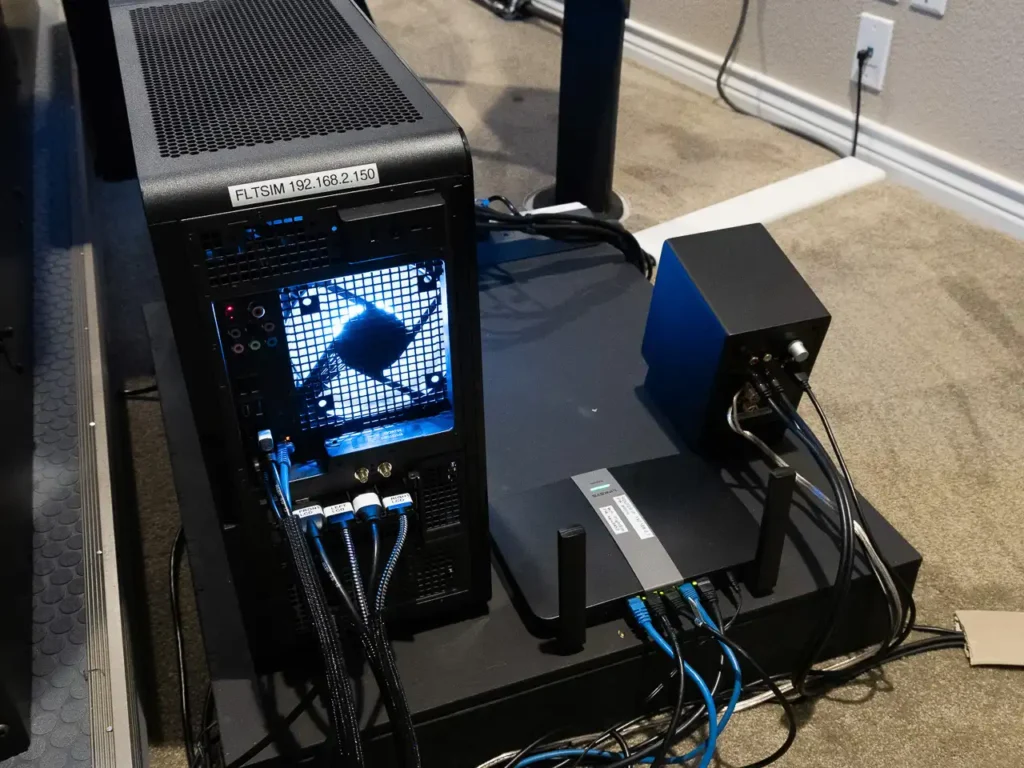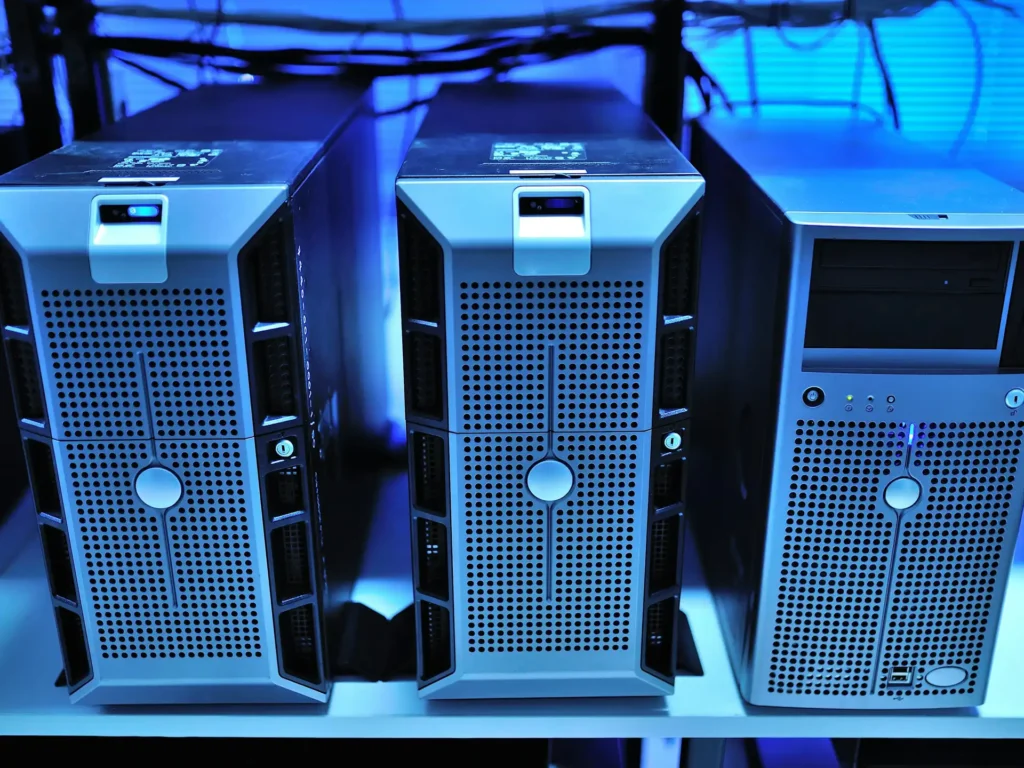The main sim computer is used for two core simulator functions: the base simulator software and the specialized aircraft software that emulates the B-737.
Base Simulation Software – Prepar3D
The main sim computer is used for the base flight simulator program, such as Prepar3D, which creates the external visual graphics. This software is responsible for the aerodynamic performance calculations that determine aircraft motion, then creation of the graphics for the world scenery from the aircraft’s current position. This is an extremely processor intensive set of calculations, especially when using multiple external displays.
Aircraft Systems Software – ProSim737
This main computer also runs the specialized software, such as ProSim737, that emulates the B-737 aircraft systems as well as provides integration of the various software and hardware sim components.
Recommended Specs
Because of computer process interdependencies, a substantial amount of the CPU processing is not amendable to multi-threading. Therefore, the primary CPU core is usually saturated and becomes the limiting factor in frame rate. Although graphic card performance is the primary determinant of frame rate in many PC games, with flight simulation, the CPU performance is more important. Therefore, selection of a computer with powerful CPU single-core performance is as important or even more so than the graphic card GPU performance. Advanced CPU cooling is usually required to maximize frame rate.
It is also important for the main computer to have two separate SSD hard drives. One for the operating system and a second drive for the flight simulator software. The SSD for the flight simulator software would ideally be a M.2 PCIe SSD which allows for the fastest data read/write rates. This allows for world scenery data to be quickly loaded as the aircraft moves from one scenery area to another.
This simulator uses a Dell Alienware Aurora R16 with the following customized specifications:
Connections
The “FltSim” computer is connected to three large external LCD displays and a small LCD utility display via the HDMI and Display Port outputs from the NVIDIA graphics card. One USB port is connected to a USB powered speaker system for external aircraft sounds. A second USB port is used for connection to a 36 watt powered 7-port USB hub, which is connected to the flight control yokes, rudder pedals, steering tiller, MCP/EFIS panel, and rudder trim panel. The computer is connected to the dedicated Ethernet router with an Ethernet cable.
The powered USB hub should always be powered on prior to starting the computer. USB devices should be initially added to the USB hub, once device at a time.

Applications Installed
Configuration
Microsoft Windows 11 is used for the operating system. Prior to installing simulator software, the computer was configured as follows: removal of desktop shortcuts and unwanted taskbar items, configure power saving & sleep settings so that the display never blanks & the computer never sleeps, unlink Microsoft OneDrive and prevent launch at start-up, set the computer’s network name to “FlightSim”, and set a fixed manual IP address for the computer.
Display settings are configured by identifying each display and dragging the display icons to match the physical display’s layout with the small utility monitor at the far left position and configured to be the primary display. Even though the LCD TV displays are 4K, resolution is set to 1920 x 1080 with a 60Hz refresh rate. The taskbar is configured to appear only on the primary utility display.



